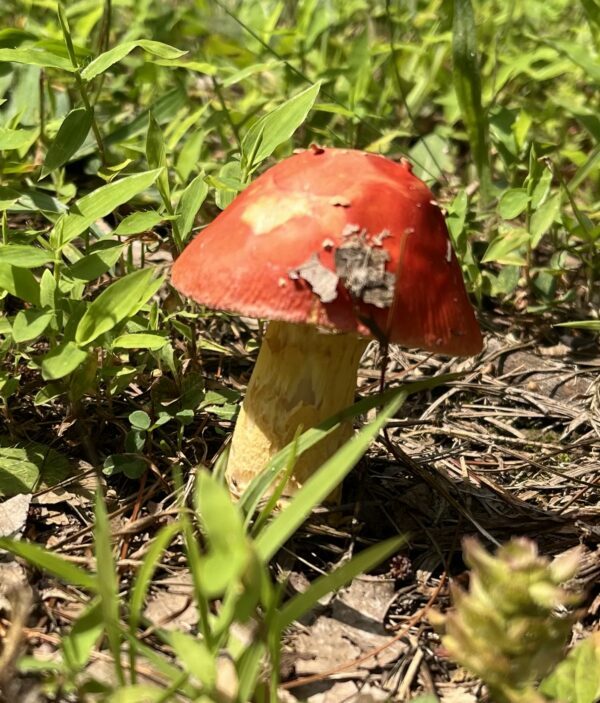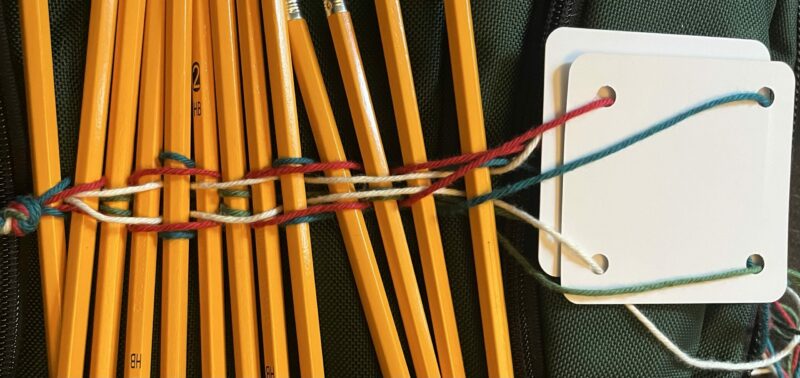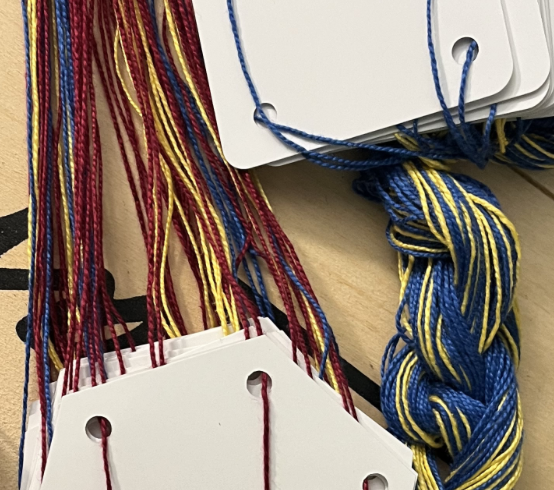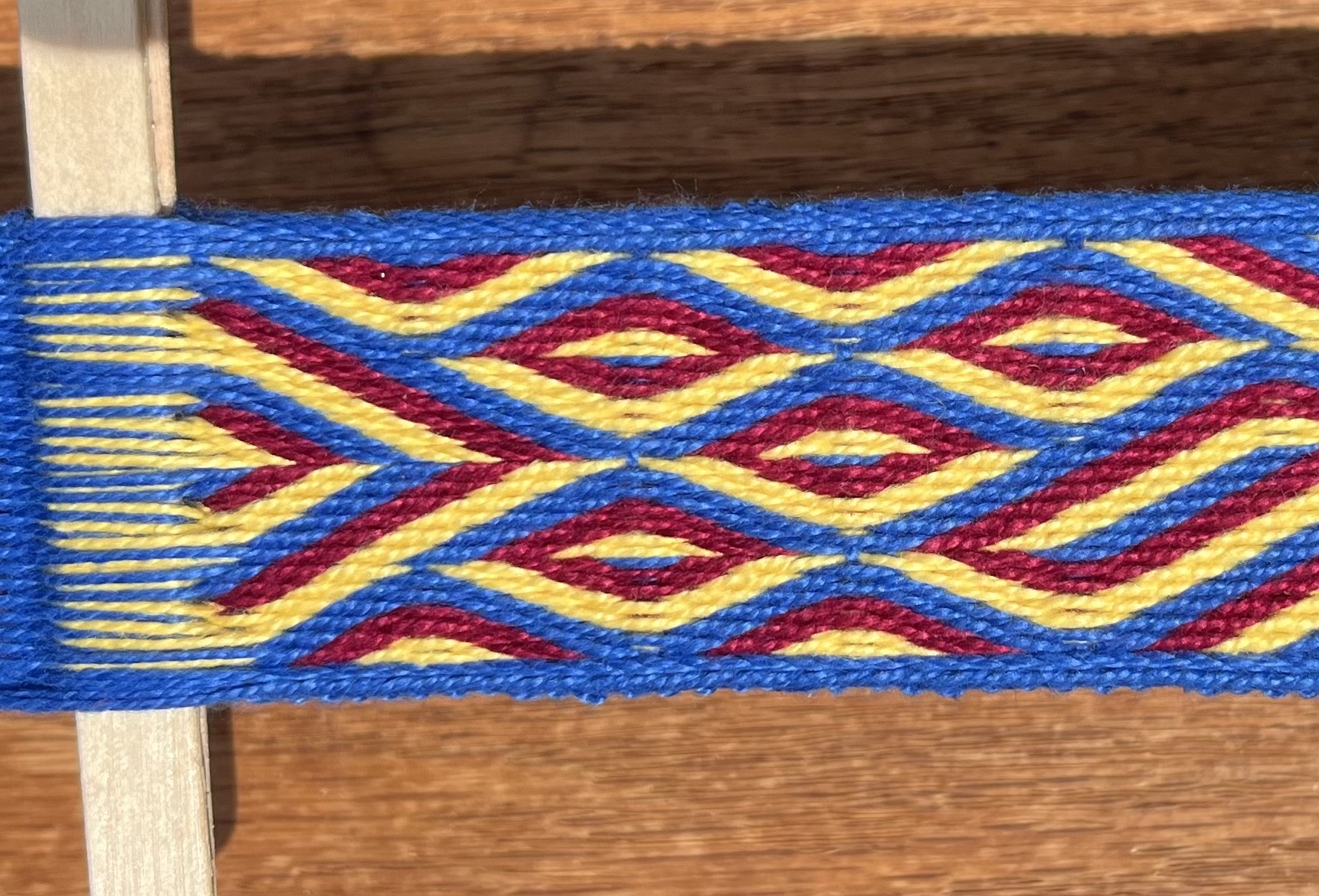Today was a day for doing stuff.
I cleaned the house. (And by “cleaned”, please realize that I mean that the house is no longer scary and coated with dog fur, rather than that any particular room is actually clean by any standards including my own. Mom, please pretend you skipped this bit.)
I spun a bit of the camel-merino-silk, and am now half-done.
I finally copied the rest of the sheep-herding photos from the Pennsylvania Fiber Fest off of my camera.

Caption: My ancestors ate your ancestors, so you had damn well better go where I want you.
I dyed four batches of roving. Note to self: I don’t like dyeing roving, and I’m not good at it. And the latter affects the former. Yarn, I’m good at. Roving has a mind of its own. The dye doesn’t go where I want it to, or stay where I want it either. The solar dyeing season is nearly over; the sun already doesn’t spend enough time shining in the courtyard. (pout) Soon even the outdoor dyeing season will be over, I’m afraid. Don’t stop now, I’m having fun!!! [Damned noncooperative orbit around the sun!]
I baked bread for the first time in I think a couple years (yikes!). And I made mozarella to go with it, from the excellent Home Cheese Making by Ricki Carroll. The 30 minute mozzarella recipe is available in short form on her website, and longer versions are available at a number of cooking sites.
[Amended: Ricki Carroll has an extremely useful illustrated guide to this 30-minute mozzarella recipe, with lots of pictures.]
One of my personal goals as a medieval recreationist is to learn the skills that a Viking housewife would have had. Some of those will only be theoretical, like keeping livestock, but others are quite possible to acquire. Cheesemaking is one of the latter. My first attempt was not so successful – the grocery store junket rennet isn’t so hot for cheese. It tasted fine, but stayed very creamy.
I thought I’d make an event of it, and invite my local recreationist group over for a bread and cheese workshop. When nobody showed up by 3 hours after the start time, I began the bread. (It’s very difficult to get people in this group to do things even at the local level, so I try to only plan workshops for things I intend to do anyway.) Two people did show up for the cheesemaking. Hooray! This sort of thing is vastly more fun as a group activity.
The first step is to heat the milk and add an acid. The traditional method is to culture the milk (much like making yogurt). Rennet is the main agent that sets the milk curd, and the enzymes function best in warm, acid conditions. The objective of the cheesemaker is to make the enzymes happy! We did a pretty good job with that part, and got a nice pot of curds and whey.

The whey is strained off, and the curd is heated and kneaded.

We never got the “taffylike” consistency or stringiness that mozzarella is supposed to have, but we did get tasty solid cheese. It’s also invisible, as you can see in the last photo of the sequence.

I did remember to take the photograph before we ate it all, I swear! But taking a flash photo of white cheese on a white plate takes more attention to detail than I provided. Note to self: next time, use a black plate.
The bread was quite tasty – apparently I didn’t forget how to do it – and the tomatoes are from the monster plants. The milk is even local, from the dairy down the street, and comes in glass bottles. I feel virtuous, and deeply satisfied – I like doing this kind of thing, and I appreciate having access to fresh local ingredients.
It took more than 30 minutes, but I can see this being a half-hour process once I become more familiar with it. I expect I’ll be eating a lot more fresh mozzarella, at least as long as the tomatoes hold out.






One response to “Invisible cheese”
Oh, yum. I have bought fresh mozzarella and fresh tomatoes to eat with my basil (yay, I have one food plant). My favorite grocery store keeps a tally of how many local products they offer–I’ve been getting the assorted cherry tomatoes, and they are superb. Since I’ve been away from home I’ve hardly eaten any tomatoes; what most stores sell as tomatoes are really plastic in disguise. But ooh, having fresh homemade bread and homemade cheese…
I had been wondering what you’d do about dyeing once the sun heads south for the winter. Stove?